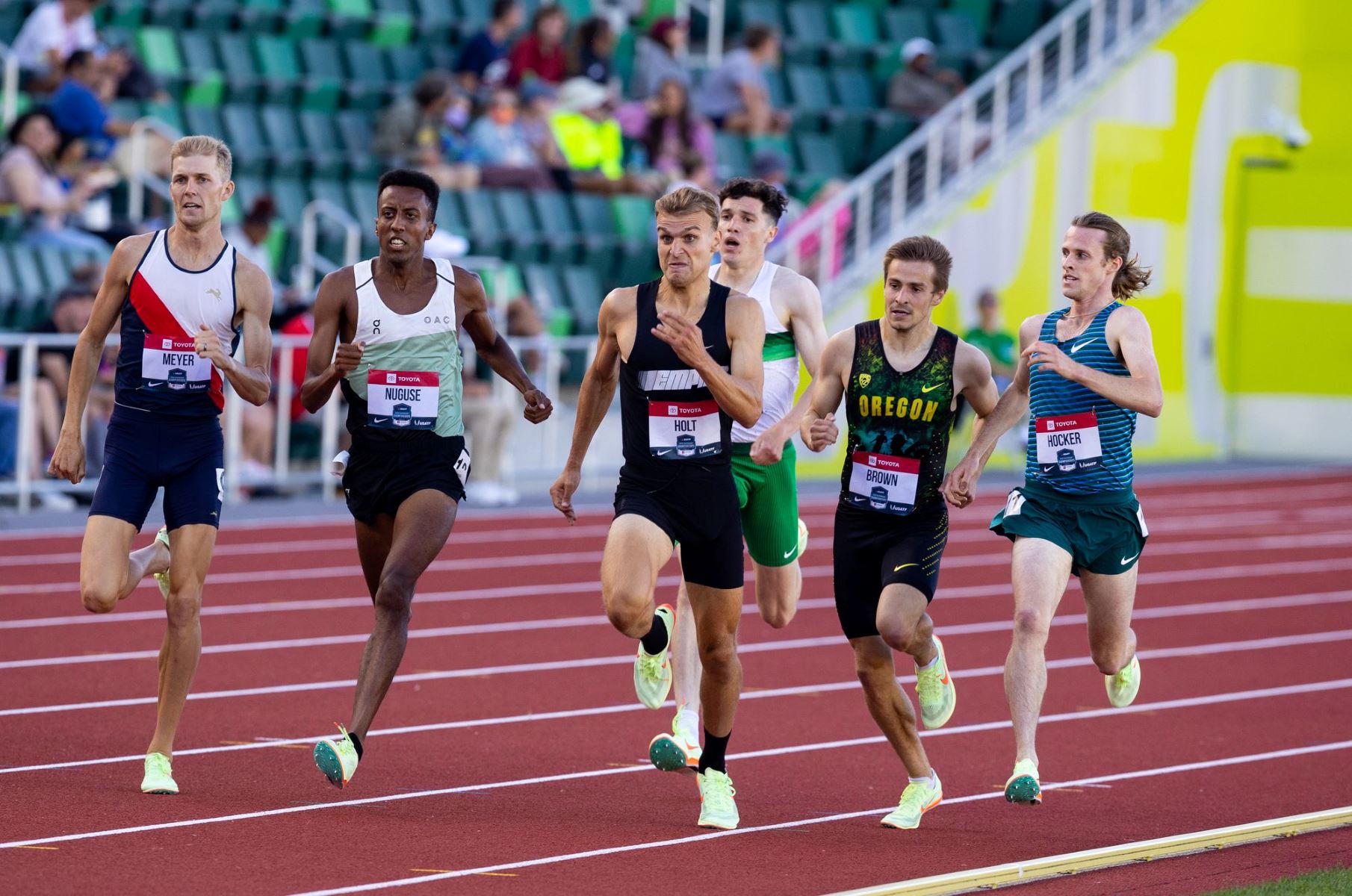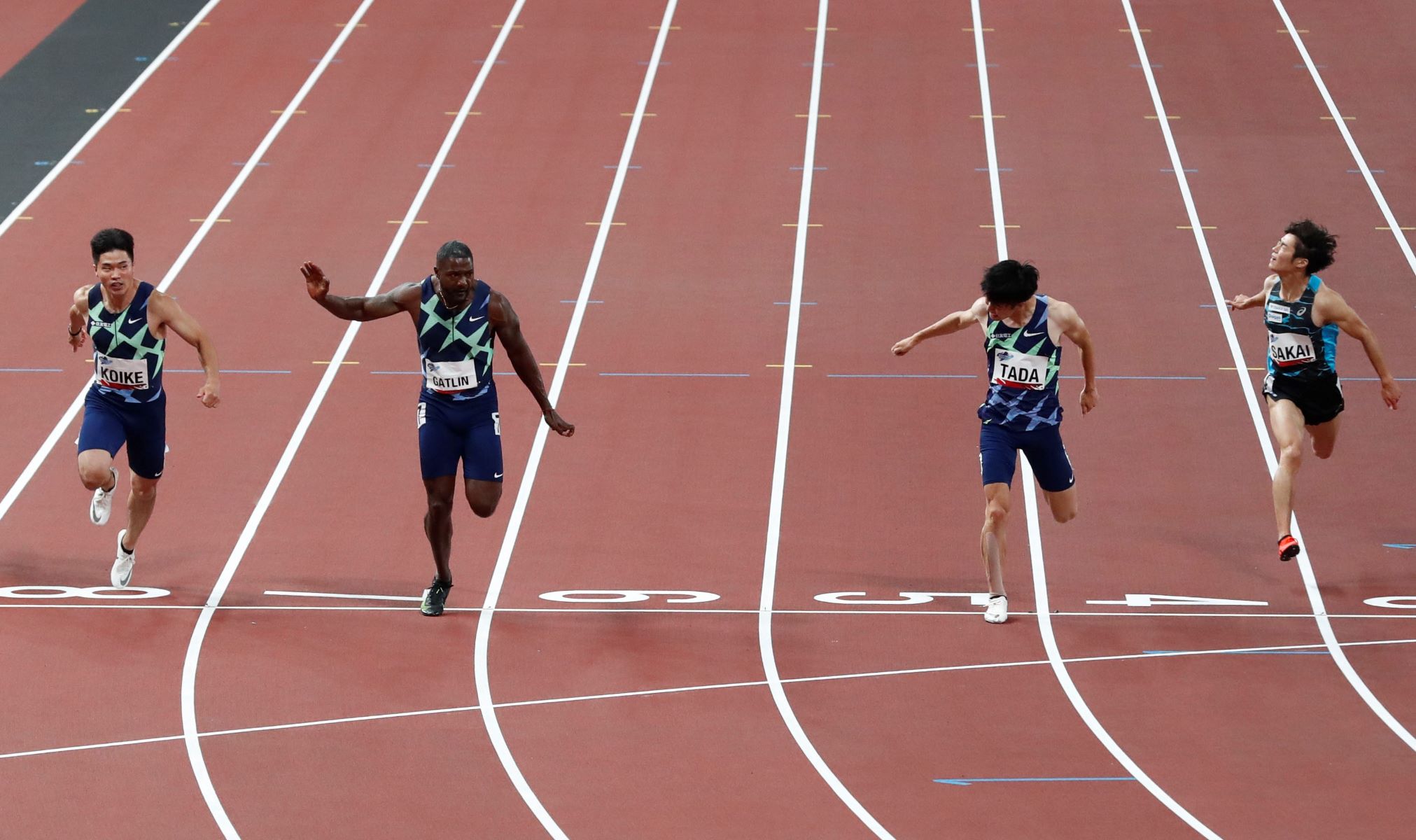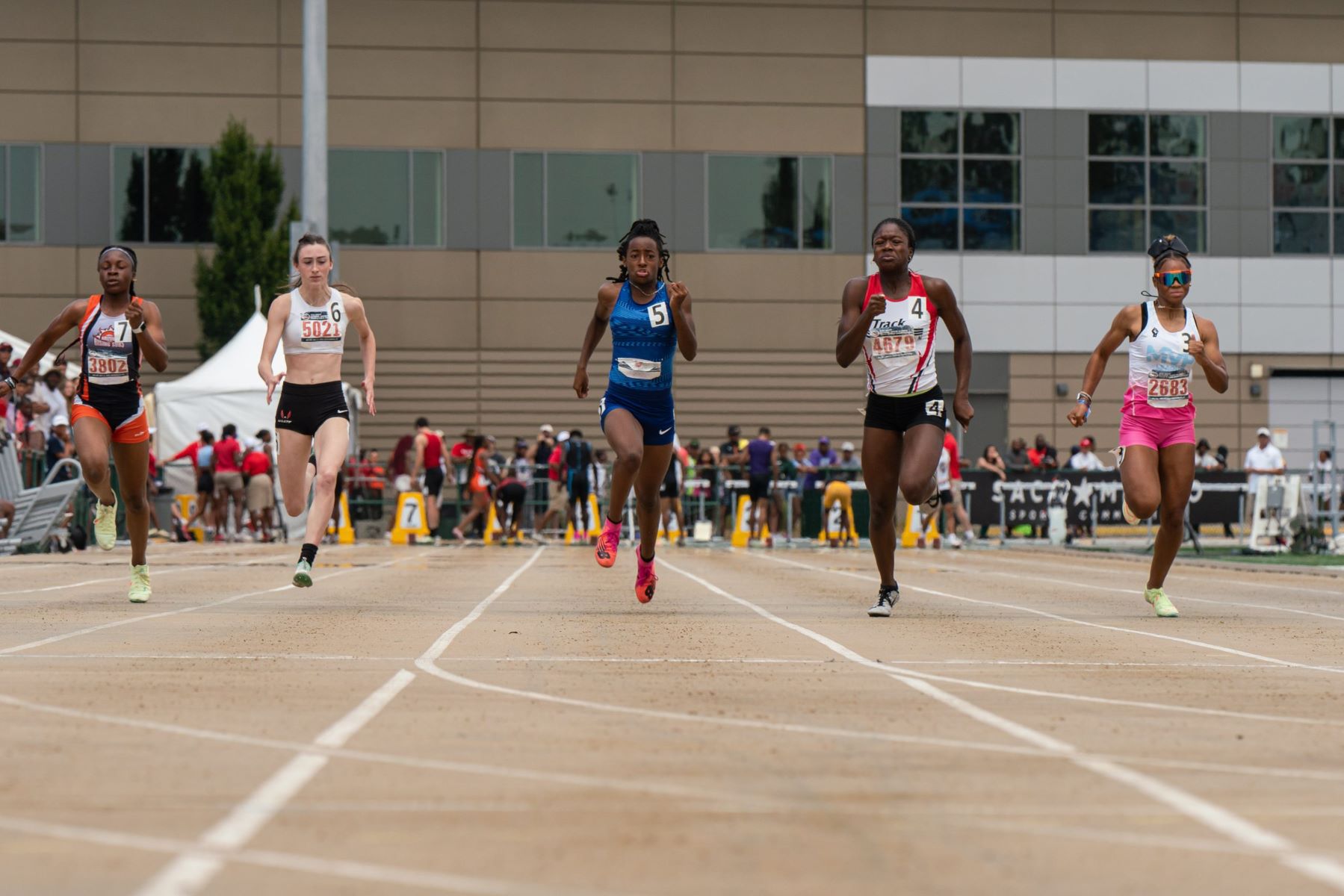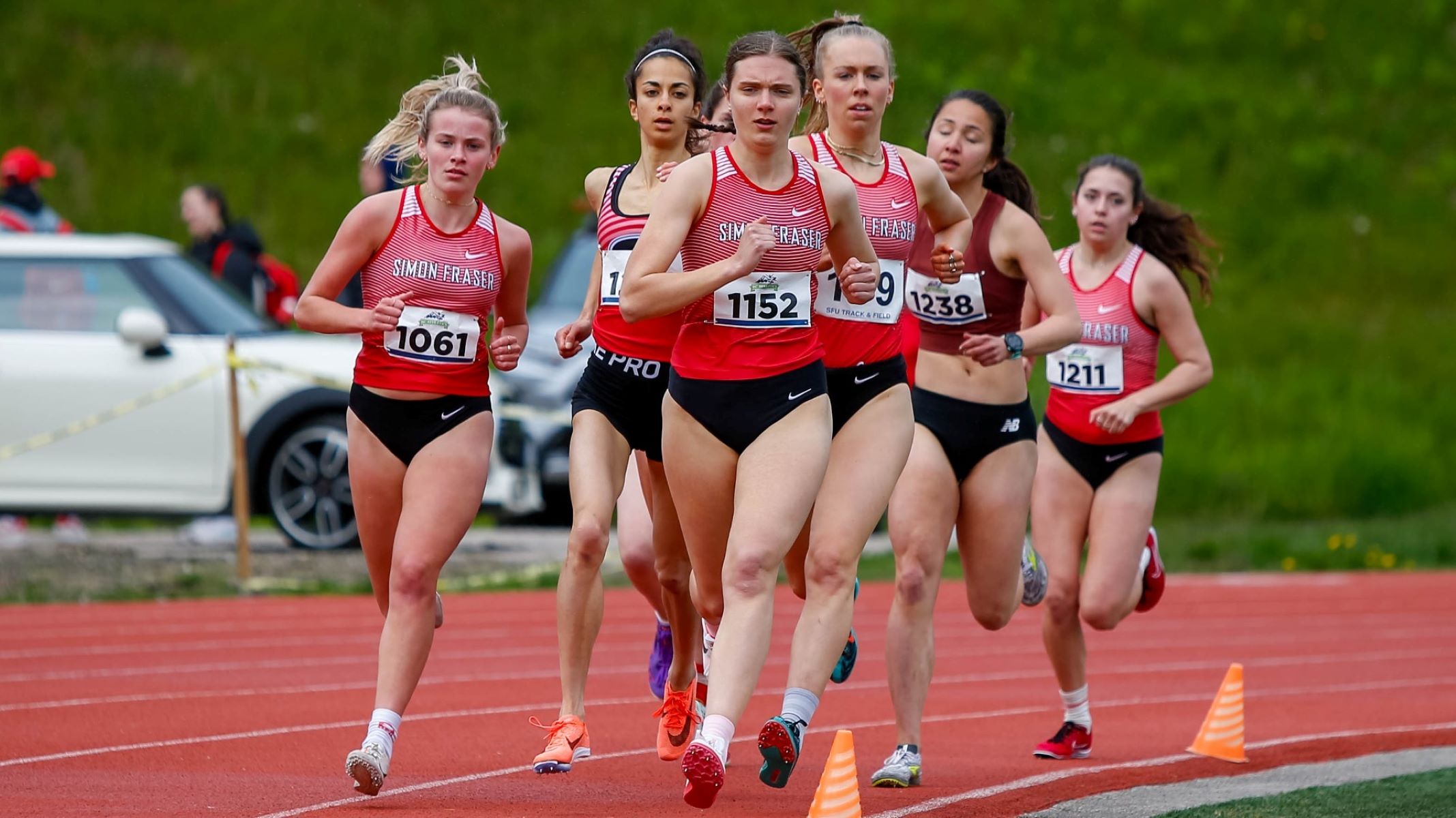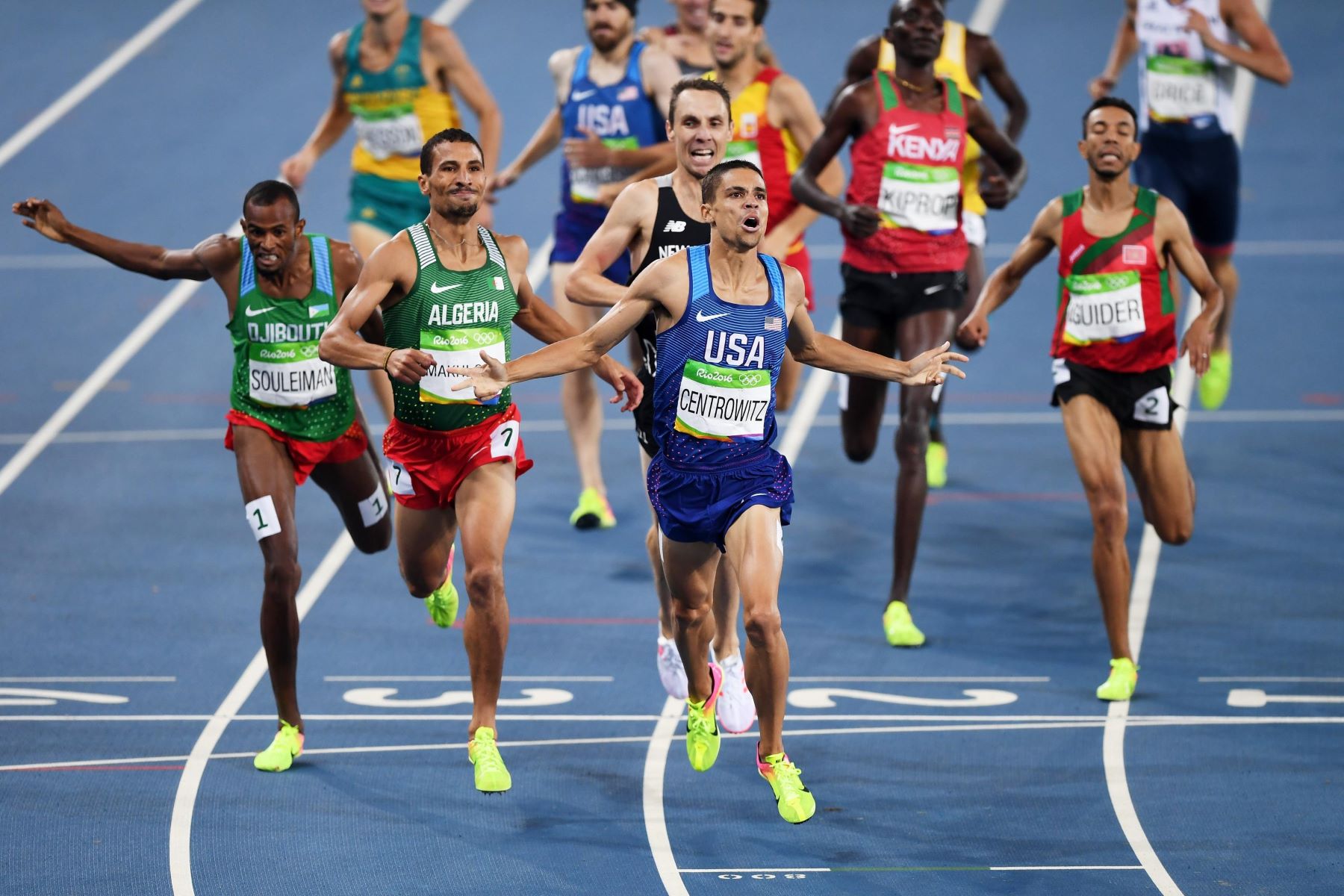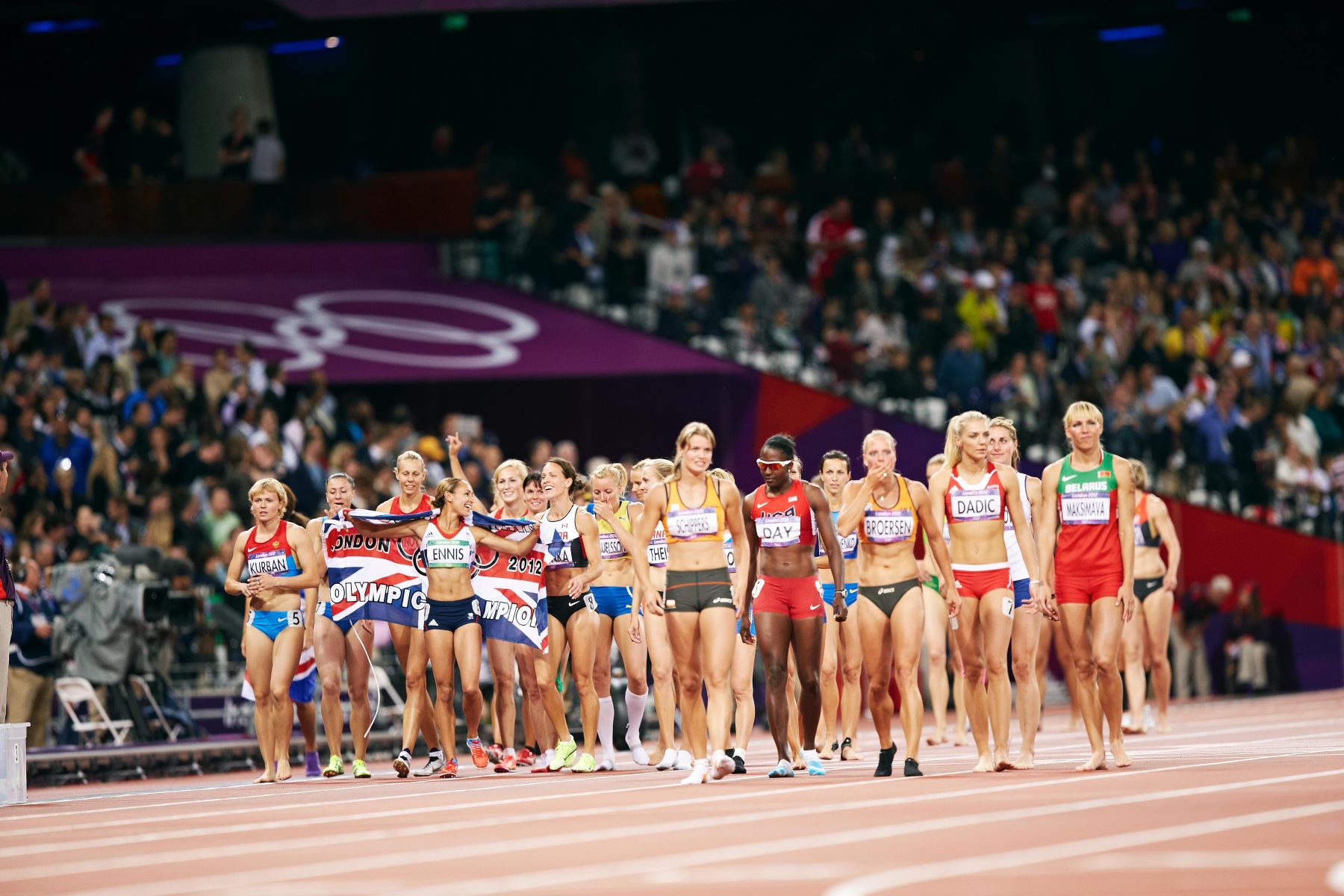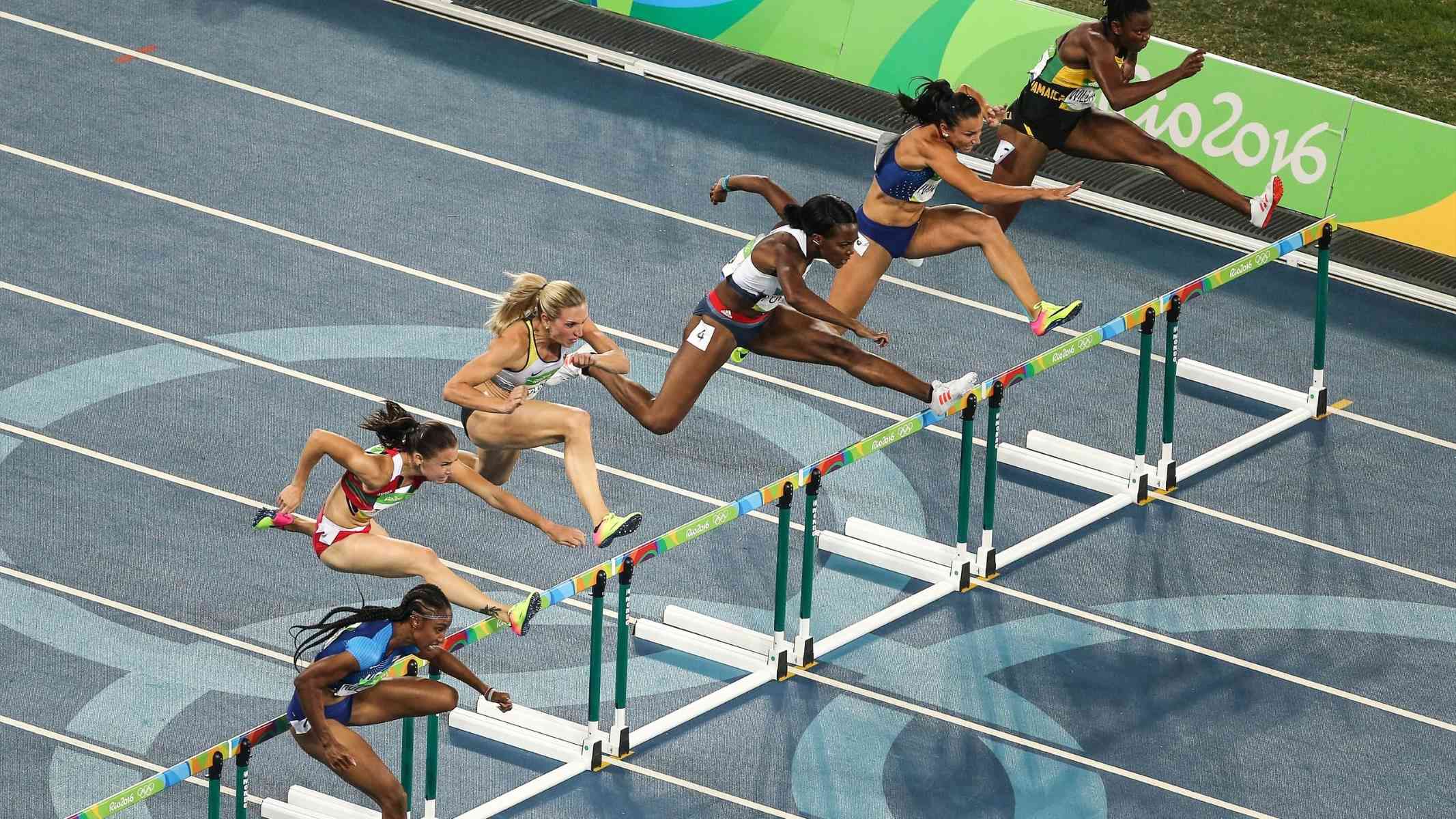Home>Misc>Featured>What Track And Field Events Are In The Olympics
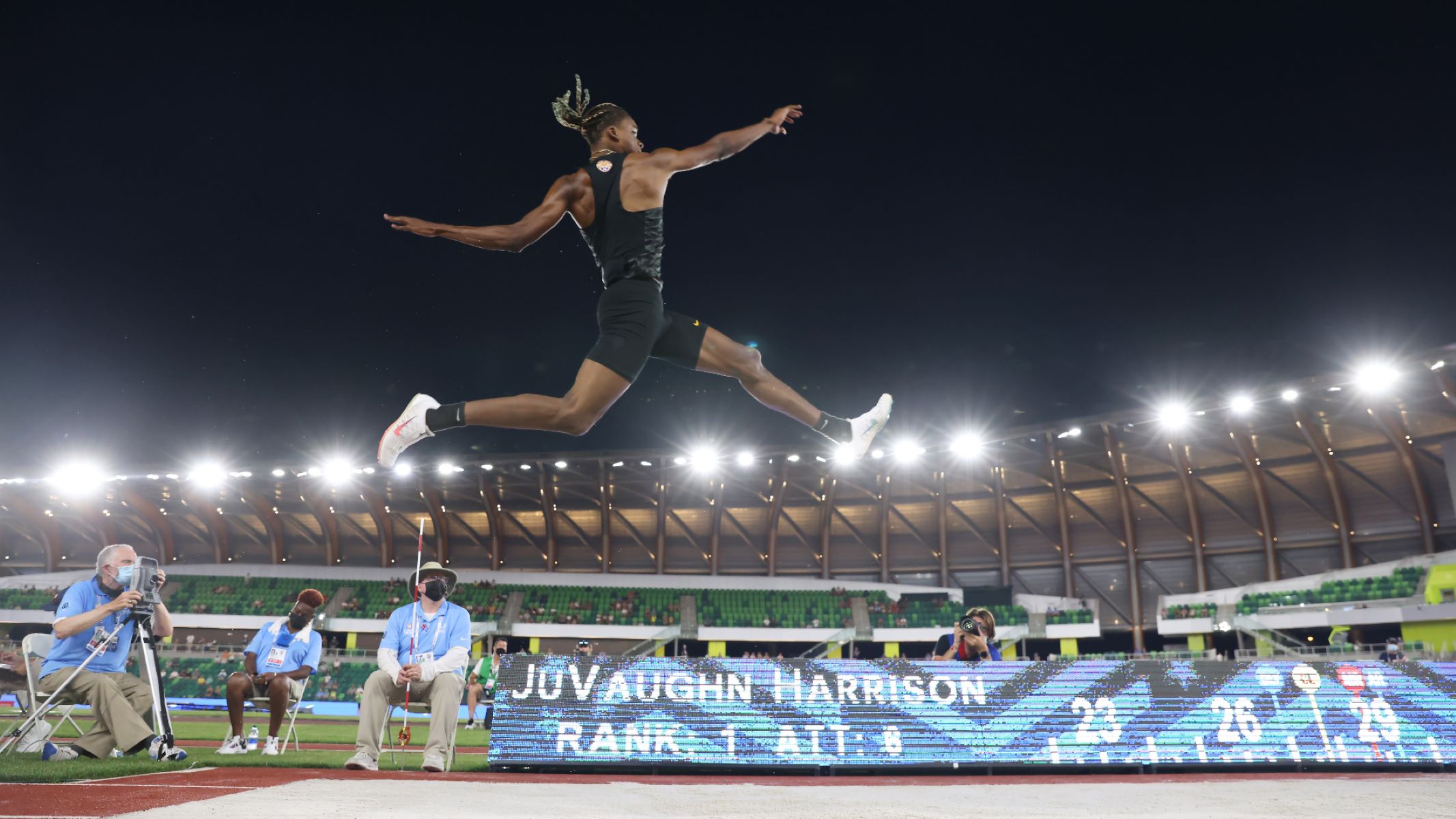

Featured
What Track And Field Events Are In The Olympics
Modified: January 1, 2024
Discover the thrilling track and field events at the Olympics, featuring top athletes competing in sprints, hurdles, long jump, high jump, shot put and more.
Introduction
The Olympic Games are a celebration of athletic excellence and sportmanship, bringing together athletes from around the world to compete at the highest level. One of the most exciting and highly anticipated categories in the Olympics is track and field events.
Track and field events showcase the raw power, speed, and skill of the participating athletes. From sprinting to throwing, jumping to hurdling, these events are a true test of an athlete’s physical abilities and determination.
Throughout the history of the Olympics, track and field events have played a pivotal role in highlighting the achievements and breaking the boundaries of human athleticism. They have captivated audiences worldwide with thrilling displays of speed, endurance, agility, and strength.
This article aims to shed light on the various track and field events that take place in the Olympics, giving you an insight into the disciplines and skills that make these events so exhilarating.
So, whether you’re a fan of watching the explosive speed of sprinters, the grace of long jumpers, or the precision of javelin throwers, there’s something for everyone in the world of track and field at the Olympics.
Track Events
Track events in the Olympics are a dazzling display of speed, endurance, and agility. Athletes push their bodies to the limit, racing against the clock and each other to claim victory. Here are some of the highlight track events that you can expect to witness in the Olympic Games:
Sprinting
Sprinting events are all about explosive speed and quick bursts of energy. From the 100-meter dash to the 200-meter and 400-meter races, sprinters showcase their ability to cover short distances in the shortest possible time. These events require athletes to have remarkable acceleration and strength, as they strive to cross the finish line ahead of their competitors.
Middle-Distance Running
In middle-distance running events, athletes need a combination of speed and endurance. The 800-meter and 1500-meter races test the athletes’ ability to maintain a fast pace over slightly longer distances. It requires strategic pacing, as they aim to conserve energy while staying among the leading pack. Middle-distance runners demonstrate the perfect balance of speed and stamina.
Long-Distance Running
Long-distance running events captivate spectators with displays of extraordinary endurance. Marathon and 10,000-meter races are grueling challenges that push athletes to their limits. These events require mental and physical toughness, as participants battle fatigue and face the ultimate test of resilience as they compete over significant distances.
Hurdles
Hurdles add an extra layer of difficulty to the sprinting events. Athletes must navigate a series of barriers strategically placed on the track, adding a technical aspect to the race. Hurdle events include the 110-meter hurdles for men and the 100-meter hurdles for women. It requires a combination of speed, precision, and agility to clear each hurdle smoothly and maintain momentum towards the finish line.
Steeplechase
The steeplechase is a track event that combines long-distance running with hurdles and a water jump. Athletes must clear multiple barriers, including a large water pit, over a distance of 3,000 meters. It demands a unique set of skills, as runners must maintain a quick pace while maneuvering the hurdles and navigating the water jump without losing momentum.
Relay Races
Relay races are team events where athletes collaborate to achieve success. The 4×100-meter and 4×400-meter relays involve passing a baton between team members as they sprint around the track. These races are thrilling to watch, as teams strategize their exchanges and strive for flawless teamwork to gain a competitive edge.
The track events in the Olympics are a showcase of athleticism and determination. Athletes strive to achieve their personal bests and break records on the grandest stage of all. These races not only captivate audiences with their speed and skill, but they also inspire individuals to push their own limits and strive for greatness.
Sprinting
Sprinting events in track and field are a thrilling showcase of explosive speed and raw power. It is the epitome of athletic prowess, where athletes push their bodies to the limit over short distances. The primary sprinting events in the Olympics are the 100-meter, 200-meter, and 400-meter races.
The 100-meter sprint is often considered the most prestigious event in the world of athletics. The race lasts mere seconds, and athletes strive to burst out of the starting blocks with astonishing acceleration. It requires a perfect blend of explosive power, technique, and mental focus to maintain top speed and cross the finish line ahead of the competition. Olympic gold medalists in the 100-meter sprint, such as Usain Bolt and Florence Griffith-Joyner, have become legendary figures in the world of track and field.
The 200-meter sprint provides a slightly longer test of an athlete’s speed. It demands the ability to maintain top speed while navigating the curve of the track. Athletes must also possess the resilience and strength to hold off challengers, especially in the final stretch. Watching athletes like Allyson Felix and Michael Johnson dominate the 200-meter race with their incredible speed and unparalleled technique is a thrilling experience for spectators.
The 400-meter sprint is known as the ultimate test of speed and endurance. Athletes must have the ability to maintain a blistering pace for an entire lap around the track. It requires incredible fitness levels and mental fortitude. The 400-meter event showcases the perfect combination of raw speed and unwavering determination. Olympic gold medalists like Wayde van Niekerk and Sanya Richards-Ross have captivated audiences with their dominance in this challenging event.
Sprinting events in the Olympics not only celebrate individual achievements but also national pride. The world watches in awe as athletes from different nations race against each other, striving to become the fastest human beings on the planet. These races ignite the crowds and leave spectators on the edge of their seats, anticipating every fraction of a second that could determine the winner.
Sprinting events exemplify the pinnacle of human speed and athleticism. They inspire generations of aspiring athletes to chase their dreams and strive for greatness. Whether it’s the heart-pounding start, the explosive burst of speed, or the exhilarating finish, sprinting events in the Olympics never fail to deliver heart-stopping moments that leave a lasting impression on all who witness them.
Middle-Distance Running
Middle-distance running events in track and field combine speed, endurance, and tactical execution. Athletes competing in these races must possess a balanced blend of speed and stamina to navigate the challenging distances. The primary middle-distance events in the Olympics are the 800-meter and the 1500-meter races.
The 800-meter race is a unique test of speed and endurance. It requires athletes to maintain a fast pace while conserving energy throughout the two-lap race. Athletes often strategize when to make their move, aiming to position themselves for a strong finish. The 800-meter race demands not only physical strength but also mental acuity to gauge the competition and execute an efficient race plan. Iconic athletes like David Rudisha and Nadede Amos have left their mark in Olympic history, showcasing their dominance in this challenging event.
The 1500-meter race is a true spectacle of middle-distance running. Athletes must possess the speed of a sprinter and the endurance of a distance runner to excel in this event. This race often sees tactical battles unfold, as athletes jockey for position, conserve energy, and unleash their final kick in the home stretch. Olympic champions such as Hicham El Guerrouj and Faith Kipyegon have demonstrated remarkable speed and tactical brilliance in winning the 1500-meter race, leaving fans in awe of their strategic mastery.
Middle-distance running events captivate spectators by highlighting the delicate balance between speed and stamina. Athletes must pace themselves effectively, conserving energy to execute a well-timed surge that leaves their competitors in their wake. These races require exceptional fitness levels, mental strength, and impeccable running technique.
Watching middle-distance runners push their limits and unleash their finishing kicks is a sight to behold. The combination of skillful tactics, relentless determination, and impressive speed provides thrilling moments for both athletes and spectators. Middle-distance running events in the Olympics inspire aspiring athletes to challenge their boundaries and strive for greatness in their pursuit of endurance and speed.
Whether it’s the exhilaration of a well-timed surge, the thrill of a close finish, or the sheer athleticism on display, middle-distance running never fails to captivate audiences as athletes deliver extraordinary performances that test the limits of human capability.
Long-Distance Running
Long-distance running events in track and field are a true test of endurance, mental fortitude, and physical strength. These races push athletes to their limits as they cover substantial distances, evoking admiration and awe from spectators around the world. The primary long-distance events in the Olympics are the marathon and 10,000-meter race.
The marathon is the pinnacle of long-distance running. Covering a distance of 42.195 kilometers (26.2 miles), it demands immense physical and mental preparedness. Athletes battle fatigue, muscle cramps, and mental exhaustion as they race through city streets and scenic courses. The marathon tests an athlete’s ability to sustain a fast pace over an extended period, pushing their bodies to the brink of exhaustion. Consequently, those who triumph in the marathon become legends in their own right, etching their names in Olympic history. Olympic gold medalists like Eliud Kipchoge and Joan Benoit Samuelson have captivated the world with their extraordinary performances in the marathon.
The 10,000-meter race is another grueling long-distance event in track and field. Athletes compete over 25 laps of the track, showcasing not only their endurance but also their tactical intelligence. The race demands a delicate balance between pacing and strategic decision-making. Athletes must conserve energy while strategically positioning themselves to make a decisive move in the later stages of the race. Olympic champions like Kenenisa Bekele and Tirunesh Dibaba have demonstrated exceptional stamina, mental resilience, and impeccable race execution in conquering the 10,000-meter event.
Long-distance running events in the Olympics transcend physical prowess. They embody the human spirit’s indomitable will and determination to conquer seemingly impossible challenges. Athletes push their bodies and minds to their limits, inspiring others to overcome adversity and strive for greatness.
Watching long-distance runners tackle the marathon or battle exhaustion in the 10,000-meter race is a testament to human endurance and the triumph of the human spirit. These events capture the essence of sporting achievement and inspire spectators to appreciate the human capacity for resilience and determination.
Long-distance running events in the Olympics showcase the incredible feats that can be accomplished with discipline, training, and a never-give-up attitude. As athletes compete over vast distances, their performances become a source of inspiration for both professional runners and recreational enthusiasts alike, encouraging them to push their boundaries and embrace the challenges that lie ahead.
Hurdles
Hurdle events in track and field bring an additional level of excitement and technicality to the sport. Athletes showcase their speed, agility, and precision as they navigate a series of barriers strategically placed on the track. The hurdle events in the Olympics include the 110-meter hurdles for men and the 100-meter hurdles for women.
The 110-meter hurdles for men is a thrilling spectacle. Athletes must sprint at full speed while effortlessly leaping over ten hurdles placed at regular intervals. The height of the hurdles remains fixed at 1.067 meters (42 inches), adding an element of challenge to the race. The athletes’ ability to maintain their rhythm and timing while efficiently clearing each hurdle is essential for success in this event. Olympic legends such as Aries Merritt and Dayron Robles have captivated audiences with their athleticism and the elegant way they effortlessly glide over the hurdles.
The 100-meter hurdles for women showcase the finest athletes displaying their extraordinary agility and technique. This event requires a relentless combination of speed, flexibility, and precision. Athletes must efficiently clear ten barriers set at a height of 0.838 meters (33 inches) while maintaining their momentum throughout the race. Olympic champions like Gail Devers and Sally Pearson have left indelible marks on this event, mesmerizing spectators with their skill and grace.
Hurdle events demand not only physical prowess but also mental acuity. Athletes must possess the ability to maintain focus while approaching each hurdle and adjust their stride pattern accordingly. The timing of takeoff and fluidity of movement are crucial in maximizing efficiency and minimizing any disruption to their forward momentum.
Watching athletes soar over the hurdles, seemingly defying gravity, is mesmerizing. It showcases the perfectly synchronized coordination of the body, mind, and technical skills required to excel in this event. The margin for error is slim, making every race a captivating display of speed, precision, and athleticism.
Hurdle events provide a unique blend of speed and technical challenge, captivating spectators with the visual spectacle of athletes effortlessly clearing barriers as they race towards the finish line. These events inspire aspiring athletes to hone their skills, push their limits, and demonstrate that with dedication and practice, obstacles can be overcome.
In the world of track and field, hurdle events add an electrifying dimension, infusing the sport with an extra level of athleticism and drama that keeps audiences on their toes. They bring a sense of elegance and grace to the track, showcasing the remarkable abilities of athletes who have perfected the art of hurdling.
Steeplechase
The steeplechase is a thrilling and challenging track event that combines long-distance running with various obstacles, including hurdles and a water jump. This unique and demanding race requires athletes to exhibit not only speed and endurance but also exceptional technique and mental fortitude. The steeplechase event in the Olympics covers a distance of 3,000 meters.
During the race, athletes must clear a total of 28 hurdles and seven water jumps strategically placed around the track. The hurdles are 0.914 meters (3 feet) high, and the water jump features a barrier followed by a pool of water. Athletes must maintain a strong pace while approaching each hurdle, gracefully clearing it and seamlessly transitioning into the water jump without losing momentum.
The steeplechase demands a unique skill set not found in other track events. Athletes need to possess exceptional stamina, as well as the agility and flexibility to maneuver over the hurdles while maintaining a steady rhythm. They must also display calculated decision-making skills, choosing the most efficient stride pattern and optimizing their approach to each hurdle and water jump.
The water jump is a particularly exciting aspect of the steeplechase. Athletes must time their leap over the barrier and navigate the landing into the water with precision. This adds an extra level of unpredictability and excitement to the race, as the athletes’ ability to maintain control and quickly regain their stride after the water jump plays a crucial role in their performance.
Steeplechase races are often a battle not only against the clock but also against the elements and course conditions. Athletes must adapt to various terrains, including grass and dirt tracks, adding an additional element of challenge to the event. Olympic champions like Conseslus Kipruto and Gulnara Samitova-Galkina have demonstrated their dominance in the steeplechase with their exceptional technique and ability to maintain a relentless pace throughout the race.
The steeplechase is a crowd-favorite event, captivating spectators with its combination of speed, agility, and obstacle navigation. The cheers from the crowd intensify as athletes soar over the hurdles and splash through the water jump, showcasing their resilience and determination to conquer the challenging elements of the race.
By combining long-distance running with obstacles, the steeplechase showcases the diverse range of skills required to excel in track and field. Athletes who participate in this event epitomize the relentless pursuit of excellence, pushing their bodies and minds to overcome obstacles and display remarkable athleticism.
The steeplechase at the Olympics is an event that demands physical and mental resilience while providing thrilling entertainment for spectators. It serves as a testament to the unyielding spirit of athletes who are willing to take on extraordinary challenges in pursuit of Olympic glory.
Relay Races
Relay races in track and field are exhilarating team events that showcase speed, precision, and seamless teamwork. Athletes come together to compete as a team, passing a baton from one teammate to another as they sprint around the track. The relay races in the Olympics include the 4×100-meter and 4×400-meter relays.
The 4×100-meter relay is one of the most highly anticipated events in track and field. Each team consists of four sprinters, and their ability to execute smooth and efficient baton exchanges is crucial for success. As athletes race around the track in a high-speed frenzy, the baton exchanges become moments of intense focus and nail-biting anticipation. The slightest mishap during a handoff can mean the difference between victory and defeat. Olympic teams like the United States and Jamaica have become legendary in the 4×100-meter relay, showcasing remarkable speed and coordination in their exchanges.
The 4×400-meter relay is a longer team event that requires both speed and endurance. Each team member runs a full lap around the track before passing the baton to the next runner. The 4×400-meter relay demands exceptional tactical awareness, as teams strategize which runner should take each leg to maximize their chances of success. The final sprint to the finish line always delivers a breathtaking display of determination, as athletes push themselves to their limits to secure victory for their team. Nations like the United States and Great Britain have had a long history of excelling in the 4×400-meter relay, captivating fans with their unwavering teamwork and incredible athletic prowess.
Relay races emphasize the importance of teamwork in track and field. The seamless exchange of the baton requires precise timing, trust, and coordination among the team members. It is a true collective effort, where the success of the team hinges on each individual’s performance and ability to execute flawless handoffs.
Relay races not only bring nations together but also provide a platform for athletes to showcase their individual talents within a team context. Athletes who compete in relays must possess the speed and skill to excel in their individual events as well as the ability to seamlessly integrate into the team dynamic.
Relay races demonstrate the power of collaboration and unity in sport. Athletes rely on each other, drawing motivation and inspiration from their teammates to give their all in every leg of the race. The energy and camaraderie on display during relay events are infectious, creating an electrifying atmosphere that captivates both participants and spectators.
Watching relay races in the Olympics is a thrilling experience. From the explosive start to the nail-biting baton exchanges and the final sprint to the finish line, the relay events never fail to deliver heart-stopping moments of triumph and sheer excitement. They exemplify the power of teamwork in achieving extraordinary feats and leave a lasting impression on all who witness them.
Field Events
Field events are an integral part of track and field, showcasing the remarkable athleticism and specialized skills of athletes. Unlike the track events that take place on the running track, field events focus on jumping, throwing, and vaulting. These events require a combination of explosive power, technique, and precision. Let’s explore some of the captivating field events that take center stage in the Olympics.
1. Long Jump
The long jump is a visually captivating event where athletes attempt to cover the greatest distance possible in a single leap. Runners sprint down the runway and take off from a designated point, propelling themselves forward with impressive speed and skill. They must execute a perfectly timed takeoff and combine it with explosive power to soar through the air, landing in a sandpit with finesse. Olympic athletes such as Carl Lewis and Jackie Joyner-Kersee have left an indelible mark on this event with their incredible athleticism and record-breaking performances.
2. Triple Jump
The triple jump adds an additional level of complexity and skill to the jumping events. Athletes must execute a hop, step, and jump in a seamless sequence, maximizing the distance covered in each phase. It requires an exceptional sense of rhythm, coordination, and precise technique to achieve success in this event. Olympic champions like Jonathan Edwards and Caterine Ibargüen have mesmerized spectators with their ability to generate power and fly through the air, setting new standards of excellence in the triple jump.
3. High Jump
The high jump is a thrilling event that tests an athlete’s ability to clear a horizontal bar set at varying heights without knocking it down. Athletes sprint toward the bar and use a variety of techniques – the straddle, the scissors, or the Fosbury Flop – to launch themselves over the bar. Clearing the bar demands not only exceptional jumping ability but also perfect timing and body control. Olympic legends such as Javier Sotomayor and Stefka Kostadinova have defied gravity and cleared astonishing heights, leaving spectators in awe of their extraordinary skills.
4. Pole Vault
The pole vault combines speed, technique, and nerves of steel as athletes use a fiberglass pole to clear an elevated bar. Athletes sprint down the runway, plant the pole into the box, and use its recoil to propel themselves over the bar. The pole vault demands exceptional strength, flexibility, and impeccable timing. Athletes like Renaud Lavillenie and Yelena Isinbayeva have set new records and pushed the limits of what is possible in this captivating event, thrilling spectators with their daring and skill.
5. Shot Put
The shot put is a display of pure strength and power. Athletes hurl a heavy metal ball, known as the shot, as far as possible. Success in the shot put relies on a combination of explosive strength, technique, and the ability to generate optimal body mechanics. Athletes must generate immense force and release the shot with precision to achieve maximum distance. Olympic athletes like Valerie Adams and Ryan Crouser have showcased exceptional power and technique, setting new standards for shot put excellence.
The field events in the Olympics captivate audiences with their displays of extraordinary athleticism and specialized skills. The long jump, triple jump, high jump, pole vault, and shot put each provide a unique spectacle, showcasing the physical and technical abilities of athletes in their respective disciplines. These events require a dedication to mastering their craft and a commitment to continuous improvement.
Whether it’s the elegance of a perfectly executed jump or the sheer power behind a throw, field events in track and field leave spectators in awe of the remarkable abilities displayed by athletes. They inspire aspiring athletes to pursue their passions, honing their skills in the pursuit of excellence in their chosen field events.
Long Jump
The long jump is a captivating field event in track and field where athletes display their impressive leaping ability and explosive power. In this event, athletes sprint down a runway and launch themselves into the air with the goal of covering the greatest distance possible in a single jump. The long jump requires a unique combination of speed, technique, and coordination.
During the approach, athletes build up speed to generate momentum before takeoff. With precise timing, they extend their bodies into the air, propelling themselves forward in a graceful arc. In mid-flight, the athletes pump their arms and drive their legs, maximizing their forward thrust and maximizing their jump’s distance.
As athletes descend towards the sandpit, they perform a technique known as the “hang technique” or the “step phase.” This technique involves extending one leg forward while keeping the other leg back, similar to a running motion in mid-air. It allows athletes to maintain their momentum and control their landing, ensuring their chances of a legal jump.
The landing in the sandpit is a critical aspect of the long jump. Athletes aim to execute a clean landing by stretching their bodies as far horizontally as possible, minimizing any backward movement. The distance is measured from the takeoff point to the nearest indentation made in the sand.
The long jump has a rich history of iconic Olympic moments. Athletes like Carl Lewis and Bob Beamon have captured the world’s attention with their record-breaking performances and extraordinary athleticism. Their ability to achieve remarkable distances while maintaining exceptional form and technique has solidified their status as legends in the sport.
Success in the long jump requires a combination of natural talent, extensive training, and technical finesse. Athletes must possess explosive power in their legs, exceptional speed on the runway, and precise body control throughout the jump. They must also factor in wind conditions, adjust their launch angles, and strive for optimum takeoff positions.
The long jump is not only a display of physical prowess but also a visual spectacle that captivates audiences. The moment of takeoff and suspension in mid-air leaves spectators in awe of the athletes’ athletic ability as they seemingly defy gravity. The tension builds as the athletes soar through the air, awaiting the outcome of each jump with bated breath.
Watching athletes push the boundaries of human capability in the long jump is a thrilling experience for both spectators and participants alike. It inspires a sense of wonder and admiration for the immense talent and dedication it takes to compete in this challenging field event. Whether it’s the explosive speed down the runway, the perfect takeoff, or the graceful landing, the long jump combines athleticism and artistry to create moments of pure sporting brilliance.
Triple Jump
The triple jump is a captivating field event in track and field that showcases an athlete’s ability to combine speed, power, and technique in a breathtaking display of athleticism. In this event, athletes execute a series of consecutive jumps – a hop, a step, and a jump – to cover the greatest distance possible.
The triple jump begins with an explosive hop on one leg, where athletes generate upward momentum by forcefully pushing off the ground. They then transition into a dynamic step phase, where they land on the same leg as the hop and quickly transfer their weight to the other leg. This propels them into the final phase – the jump – in which they push off from the stepping foot, extend both legs into the air, and aim to land as far forward in the sandpit as possible.
The triple jump requires a meticulous balance of power, speed, and rhythm. Athletes must execute each phase flawlessly, coordinating their body movements to maintain momentum throughout the event. It demands exceptional technique, body control, and the ability to maintain speed while transitioning between the three phases, making it a highly challenging event.
Olympic champions such as Jonathan Edwards and Caterine Ibargüen have exemplified the technical excellence and extraordinary athleticism of the triple jump. Their ability to generate immense power and cover significant distances showcases their mastery of this complex event.
One of the essential components of a successful triple jump is the horizontal distance covered in each phase. Athletes aim to maximize their horizontal speed while executing precise takeoffs and landings. This requires an acute sense of timing and body awareness, as well as the ability to adjust their technique and stride length for optimal results. The triple jump poses a unique challenge, requiring athletes to balance explosive power with refined finesse.
Watching athletes perform the triple jump is a true spectacle. The seamless flow of their movements and the combination of power and grace captivate audiences. The precision with which they execute each phase and the commitment they show in every jump leaves spectators in awe of their abilities.
The triple jump not only showcases remarkable athleticism but also celebrates the human spirit’s relentless pursuit of excellence. It represents the never-ending quest to push the limits of human potential and continuous improvement in the pursuit of greatness.
Athletes who compete in the triple jump embrace the challenge of perfecting their technique and honing their physical abilities. They strive to achieve the perfect blend of power, speed, and precision, captivating audiences with their artistry and athleticism. The triple jump is a testament to the dedication, skill, and tenacity required to excel in this demanding field event.
High Jump
The high jump is a captivating field event in track and field that combines athleticism, technique, and remarkable vertical leaping ability. It is a display of an athlete’s ability to clear a horizontal bar set at varying heights without knocking it down. The high jump requires a unique blend of power, agility, and precise body control.
High jumpers sprint down the runway with explosive speed, building up momentum as they approach the bar. As they reach the takeoff point, they utilize a variety of techniques to clear the bar. These techniques include the straddle, the scissors, and the Fosbury Flop, each demanding different skills and body movements.
The straddle technique involves facing the bar and attempting to clear it by lifting the legs and twisting the body over the bar, resembling a “straddle” position. The scissors technique sees the jumper rotating the legs in a scissor-like movement, with one leg passing over the bar before the other. The Fosbury Flop revolutionized the high jump, as athletes approach the bar with their back to it and arch their bodies over, executing a backward somersault in mid-air.
Successful high jumpers must possess a combination of explosive power, excellent jumping technique, flexibility, and body coordination. They must time their takeoff perfectly, generating upward force with each jump while maintaining their momentum and clearing the bar without knocking it down.
Olympic champions such as Javier Sotomayor and Stefka Kostadinova have pushed the limits of the high jump, leaving an everlasting impact on the sport. Their ability to clear astonishing heights with seemingly effortless grace has captivated audiences worldwide.
The high jump is not solely a test of physical prowess but is also a mental challenge. Athletes must conquer the fear of knocking down the bar and strive for perfection in each attempt. The ability to focus under pressure, maintain composure, and execute flawless jumps is essential for success in this event.
The high jump spectacle unfolds as each athlete clears the bar, raising it incrementally with each successful jump. The tension builds with each height adjustment, and the crowd holds its breath as the athletes soar over the bar or narrowly miss it.
Watching high jumpers execute their leaps with precision and grace is awe-inspiring. The ability to effortlessly catapult oneself over ever-increasing heights showcases the extraordinary capabilities of the human body and the dedication required to master this intricate event.
The high jump is an event that continually pushes the boundaries of what is deemed physically possible. Athletes strive to set new records, surpassing previous heights with each leap they take. It represents the relentless pursuit of excellence and the constant desire to reach new heights in the world of track and field.
Beyond the physical attributes, the high jump stands as a powerful symbol of overcoming obstacles and aiming for greatness. It exemplifies the spirit of perseverance and the power of the human will to conquer seemingly insurmountable challenges.
Pole Vault
The pole vault is a thrilling field event in track and field that combines speed, technique, and daring. Athletes use a flexible pole to clear a crossbar set at ever-increasing heights. The pole vault requires a unique blend of strength, agility, precision, and mental fortitude.
As athletes sprint down the runway, they carry the pole in their hands, building up momentum with each step. As they approach the takeoff point, they plant the pole into a box and use it as a lever to propel themselves into the air. The result is a powerful upward thrust that propels them over the crossbar.
Timing is crucial in the pole vault. Athletes must coordinate their movements precisely, exerting force on the pole at the perfect moment to generate maximum energy and height. They must also maintain body control and adjust their position to clear the bar successfully.
The Fosbury Flop revolutionized the pole vault, as athletes now approach the bar with their back to it. This technique, introduced by American athlete Dick Fosbury, allows vaulters to clear greater heights with improved efficiency and reduced risk of knocking the bar down.
Olympic champions such as Renaud Lavillenie and Yelena Isinbayeva have demonstrated exceptional technical prowess and mental strength in the pole vault. Their ability to manipulate the pole, fly over incredible heights, and set new records has captivated audiences around the world.
The pole vault is not without risks and challenges. It demands physical strength to carry the pole and generate upward momentum, as well as mental resilience to overcome the fear of failure and injury. Vaulters must possess exceptional body awareness and coordination to clear the bar while maintaining control of the pole.
Watching pole vaulters soar through the air is a breathtaking sight. From the explosive takeoff to the precise maneuvers over the bar, it is a true display of human athleticism and gymnastic-like acrobatics. The suspense builds with each attempt as vaulters push the limits of their abilities and clear extraordinary heights.
The pole vault has a rich history filled with dramatic moments and record-breaking achievements. Each generation of vaulters seeks to surpass the heights set by their predecessors, continually pushing the boundaries of what is considered possible in this captivating event.
Like other field events, the pole vault requires dedicated training, technical finesse, and relentless determination. Athletes spend hours perfecting their skills and mastering the intricacies of the event. They endure countless failures and setbacks while striving to achieve those moments of triumphant clearance.
The pole vault represents the spirit of adventure and the constant pursuit of pushing beyond conventional limits. Vaulters embrace the challenge, the risks, and the exhilaration that comes with defying gravity and achieving unparalleled heights. It embodies the essence of track and field, where athletes continually seek to surpass their previous achievements and reach new heights of athletic excellence.
Shot Put
The shot put is a powerful and dynamic field event in track and field that showcases the incredible strength, technique, and explosive power of athletes. In this event, competitors launch a spherical metal ball, known as the shot, as far as possible. The shot put requires a combination of strength, speed, and precision throwing technique.
During the shot put, athletes hold the shot against their neck or shoulder and brace themselves in a throwing circle. With explosive force, they push off from the rear of the circle, generating momentum as they rotate and extend their arm to release the shot. The objective is to achieve the greatest distance while keeping the shot within the throwing sector.
Success in the shot put is dependent on several factors, including strong leg drive, proper weight distribution, and precise timing of the release. Athletes must generate maximum power and transfer it efficiently from their lower body through their core and into the shot. A combination of explosive strength, technique, and coordination is essential to propel the shot to impressive distances.
Olympic champions such as Valerie Adams and Ryan Crouser have redefined the boundaries of the shot put, setting records and captivating audiences with their exceptional power and throwing abilities. These athletes make the shot put seem effortless as they launch the heavy metal ball with grace and explosive force.
The shot put requires exceptional physical strength, with athletes often possessing great upper body power and explosive leg drive. Training involves a combination of weightlifting, plyometrics, and technique work to maximize performance and optimize throwing distance.
Technique is a crucial aspect of shot put success. Athletes must pay close attention to their footwork, balance, and the smooth coordination of their upper body and arm during the throw. They must also master the precise moment to release the shot to achieve maximum distance while maintaining control.
Watching shot putters display their immense strength and power is visually captivating. The explosive energy released as the shot is launched, combined with the focused and concentrated effort, creates a spectacle that demands attention and admiration.
The shot put is an event that exemplifies the epitome of strength and raw power in track and field. It celebrates the remarkable physical capabilities of athletes, inspiring awe and appreciation for the dedication and hard work required to excel in this field event.
Competing in the shot put requires tremendous discipline, incredible strength, and a relentless desire to continually improve. Athletes persevere through rigorous training and hone their technique to perfect their throwing motion, always striving for greater distances.
The shot put event provides a platform for athletes to demonstrate their physical prowess as they unleash their full power and send the shot flying through the air. It represents the dynamic and explosive nature of field events, captivating spectators with the sheer force and athleticism on display.
Shot putters inspire individuals to push their limits, embrace their strength, and pursue excellence in their own endeavors. They embody the spirit of determination and the relentless pursuit of greatness, continually striving to break barriers and redefine the boundaries of human capability in the shot put event.
Discus Throw
The discus throw is a captivating field event in track and field that combines strength, technique, and precision. In this event, athletes hurl a discus, a heavy circular object, with the goal of achieving maximum distance. The discus throw requires a unique blend of power, speed, and exceptional throwing technique.
Athletes grip the discus and enter a circular throwing area known as the ring. As they generate momentum by rotating within the ring, they rapidly accelerate their arm and release the discus with a flick of the wrist. The objective is to achieve the farthest distance while keeping the discus within the designated throwing sector.
Success in the discus throw relies on several factors, including explosive lower body strength, efficient transfer of power through the hips and torso, and proper hand and wrist positioning during release. Athletes work to perfect their throwing technique, optimizing their body positioning and maintaining balance throughout the throwing motion.
Throwers like Sandra Perković and Robert Harting have demonstrated mastery of the discus event, setting records and captivating audiences with their immense power, precise technique, and consistency in achieving extraordinary distances. These athletes possess exceptional strength and a well-honed ability to generate maximum force in their throws.
Throwing the discus requires extensive training and technical expertise. Athletes work on developing explosive leg drive, improving rotational speed, and refining their release technique to maximize their distance. They undergo grueling strength and conditioning regimens to build the necessary power and develop core stability and flexibility.
Watching discus throwers execute their throws is a mesmerizing sight. The controlled but explosive launch of the discus, combined with the focused determination on the thrower’s face, creates an intense moment of anticipation for both throwers and spectators. The discus floats gracefully through the air, seemingly defying gravity, before landing with a resounding thud.
The discus throw showcases the impressive athletic abilities and raw strength of athletes. The combination of power, technique, and precision required to execute a successful throw highlights the meticulous training and dedication necessary to excel in this field event.
Spectators are held in awe as throwers unleash their full force, propelling the discus with astonishing distances. The event celebrates the essence of competitive sport, where athletes push beyond their physical limits to achieve exceptional results.
The discus throw not only captures the crowd’s attention but also fuels inspiration and admiration for the athletes’ accomplishments. It symbolizes the potential for human achievement and the pursuit of greatness.
Competing in the discus throw is a testament to an athlete’s dedication, perseverance, and resilience. It embodies the spirit of track and field, where athletes continually strive to break records, surpass their personal bests, and leave a lasting impact on the sport.
The discus throw event serves as a reminder of the extraordinary capabilities of the human body and the boundless potential within every athlete. It stands as a testament to the pursuit of excellence and the constant desire to redefine the limits of human performance in the field of track and field.
Hammer Throw
The hammer throw is an exhilarating field event in track and field that demands immense strength, technique, and precision. In this event, athletes launch a heavy metal ball attached to a wire or chain, known as the hammer, with the goal of achieving maximum distance. The hammer throw requires a unique combination of power, rotational speed, and throwing expertise.
Athletes grip the handle of the hammer and swing it around their body before forcefully releasing it. The thrower generates momentum through a series of rotations and uses their entire body to propel the hammer as far as possible. Quick footwork, explosive leg drive, and precise timing play crucial roles in executing a successful hammer throw.
Success in the hammer throw relies on the thrower’s ability to generate maximum force and control the hammer’s trajectory. Athletes work on developing strong shoulders, core stability, and explosive lower body strength to produce the power needed for a formidable throw. The precise coordination of movements, along with an understanding of the hammer’s center of gravity, allows athletes to execute powerful and well-directed throws.
Olympic medalists such as Anita Włodarczyk and Paweł Fajdek have exemplified excellence in the hammer throw, setting records and captivating audiences with their tremendous power, technique, and consistent performances. These athletes possess exceptional strength and exhibit dynamic movements as they spin, accelerating the hammer to extraordinary distances.
The hammer throw demands relentless training, as throwers refine their technique, build strength, and enhance rotational speed. Athletes perform weightlifting exercises, plyometrics, and specialized drills to optimize their performance and perfect their throwing motion.
Watching hammer throwers launch the heavy ball through the air is a captivating spectacle. The sight of the spinning hammer and the thrower’s explosive release creates a sense of awe and anticipation. The hammer soars high in the sky, tracing a graceful arc before landing with a resounding impact.
The hammer throw embodies the essence of strength, athleticism, and dynamic movement. It showcases the impressive capabilities of the human body, as athletes channel their power and generate significant force to project the hammer forward.
The hammer throw event captivates spectators, as they witness throwers unleash their immense strength and leverage their rotational speed to achieve impressive distances. The event celebrates the pursuit of excellence, the unwavering commitment to training, and the drive to continually push beyond limits.
Participating in the hammer throw requires a combination of physical prowess, technical expertise, and mental fortitude. Throwers embrace the challenge of mastering this complex event, constantly striving to refine their technique and improve their throwing distance.
The hammer throw stands as a testament to the incredible potential of athletes and the persistent pursuit of greatness. It symbolizes the indomitable spirit within each competitor, as they harness their strength and skill to achieve remarkable results in this awe-inspiring field event.
Javelin Throw
The javelin throw is a captivating field event in track and field that combines strength, technique, and precision. In this event, athletes propel a spear-like object, known as the javelin, through the air with the goal of achieving maximum distance. The javelin throw requires a unique blend of explosive power, agility, and throwing expertise.
Athletes grip the javelin and approach the throwing area with purpose. As they build momentum, they transfer their energy into a full-body motion, launching the javelin with a powerful throw. The objective is to achieve the farthest distance while maintaining control and proper technique throughout the throw.
Success in the javelin throw relies on several factors, including exceptional upper body strength, precise footwork, and perfect timing of the release. Athletes work meticulously to develop their throwing technique, ensuring optimal body positioning and a coordinated throwing motion.
Olympic champions such as Tero Pitkämäki and Barbora Špotáková have demonstrated command over the javelin event with their immense power, technical finesse, and consistent performance. These athletes exhibit exceptional coordination and strength, launching the javelin with remarkable speed and accuracy.
The javelin throw requires rigorous training and technical proficiency. Athletes engage in strength and conditioning exercises, implement specialized throwing drills, and focus on developing explosive power to optimize their performance.
Watching javelin throwers launch the spear through the air is a mesmerizing sight. The javelin glides high above the ground, its trajectory a testament to the thrower’s skill and precision. The thrower’s explosive release and the sight of the javelin piercing through the air instill a sense of anticipation and awe in spectators.
The javelin throw exemplifies a fusion of strength, technique, and athleticism. It is the perfect balance between brute force and finesse. Athletes aim to not only generate power but also incorporate proper body mechanics and controlled movement to achieve superior results.
Participating in the javelin throw requires discipline, dedication, and meticulous attention to detail. Throwers endure intensive training, refine their technique, and continuously strive to improve their throwing distance.
The javelin throw event captivates audiences with its combination of explosive power, graceful flight, and sheer accuracy. It represents the pursuit of excellence as throwers push the limits of their capabilities, seeking to achieve remarkable distances and leave lasting impressions in the world of track and field.
The javelin throw embodies the indomitable spirit of athletes who dare to take on the challenge of launching the javelin to incredible distances. It stands as a reminder of the extraordinary physical capabilities of the human body and the relentless pursuit of athletic achievement.
As spectators, we bear witness to the synchronization of strength, technique, and precision in every javelin throw, appreciating the beauty and athleticism that accompanies this exceptional field event.
Combined Events
The combined events in track and field encompass a series of multi-discipline competitions that test athletes’ all-around skills, endurance, and versatility. These events, such as the decathlon for men and the heptathlon for women, require competitors to excel across a range of track and field disciplines.
Decathlon, a ten-event competition, challenges male athletes to showcase their proficiency in various events. The decathlon includes sprints, jumps, throws, and middle-distance running. Athletes accumulate points based on their performance in each discipline, and the overall winner is determined by the highest cumulative score across all events.
Similarly, the heptathlon requires female athletes to participate in seven different events, combining sprints, jumps, and throws. The heptathlon showcases an athlete’s versatility in a range of skills and disciplines, demanding both speed and endurance.
The combined events demand a unique balance between explosiveness, endurance, and technical mastery. Athletes must train rigorously in all featured events to achieve proficiency across the board. Competitors must be adept at sprinting, jumping, and throwing while possessing the ability to recover quickly between events and maintain focus throughout the duration of the competition.
Olympic champions such as Ashton Eaton and Jessica Ennis-Hill have exemplified excellence in the combined events, demonstrating remarkable skills and versatility. Their comprehensive understanding of each discipline and ability to consistently perform at a high level has elevated them to the pinnacle of combined events athletics.
The combined events are a true test of an athlete’s all-around capabilities. These competitions require not only physical prowess but also mental resilience, as athletes must maintain focus and adapt to the challenges presented by each discipline. Fitness, skill, strategy, and determination all play pivotal roles in achieving success in combined events.
Watching athletes compete in combined events is a captivating experience. Spectators witness competitors push their limits, display remarkable skills, and endure the physical demands of multiple events over a condensed period. Each event within the competition adds suspense, as every point gained or lost contributes to the athlete’s overall standing.
The combined events embody the essence of track and field as athletes strive to master numerous disciplines and showcase their versatility. The competitions challenge participants to reach their potential across various skillsets, leading to exhilarating moments and unforgettable displays of athletic prowess.
Participating in combined events requires outstanding physical fitness, discipline, and dedication. Athletes must maintain a balance between training in specialized disciplines and preparing for the combined nature of the event. These athletes serve as inspirations to others, demonstrating the rewards that come from persistent efforts, embracing diverse challenges, and constantly striving to improve in all aspects of their athletic abilities.
The combined events celebrate the incredible capabilities of athletes who embody the true essence of versatility in track and field. These competitions highlight the diverse range of skills required to excel in multiple events and provide an opportunity for athletes to showcase their athleticism across various disciplines.
Conclusion
Track and field events in the Olympics capture the essence of human athleticism and inspire millions around the globe. From the explosive speed of sprinting to the elegance of high jumps, the precision of throws, and the endurance of long-distance races, track and field showcases the incredible capabilities of athletes.
Each event, whether on the track or in the field, brings its own unique challenges and moments of pure sporting brilliance. Athletes train relentlessly, honing their skills and pushing their physical and mental limits to achieve greatness. Olympic champions, past and present, have left an indelible mark on the sport, inspiring generations through their exceptional performances and record-breaking achievements.
The Olympic Games provide a platform for athletes to showcase their talent and dedication, representing their nations with pride. The events captivate spectators with their intensity, drama, and sheer excitement. The thrill of watching athletes sprint towards the finish line, soar over hurdles, launch into the air, or hurl an object through the air is simply exhilarating.
Track and field events embody the pursuit of excellence, the indomitable human spirit, and the relentless desire to overcome physical and mental barriers. Athletes exemplify the power of discipline, perseverance, and hard work in achieving remarkable feats.
These events also symbolize the power of unity and collaboration as relay teams work together to achieve success. It highlights the joy of team spirit and the celebration of individual and collective achievements.
Whether it’s the speed, the grace, the power, or the agility on display, track and field events in the Olympics inspire us all. They remind us of the incredible potential that lies within each of us and the heights we can reach with dedication, commitment, and a relentless drive to excel.
As we witness athletes competing in track and field events, let us celebrate their triumphs, applaud their dedication, and draw inspiration from their performances. The world of track and field continues to push boundaries and redefine what is possible, captivating us with displays of exceptional athleticism and reminding us of the incredible heights that can be achieved through the power of the human spirit.
